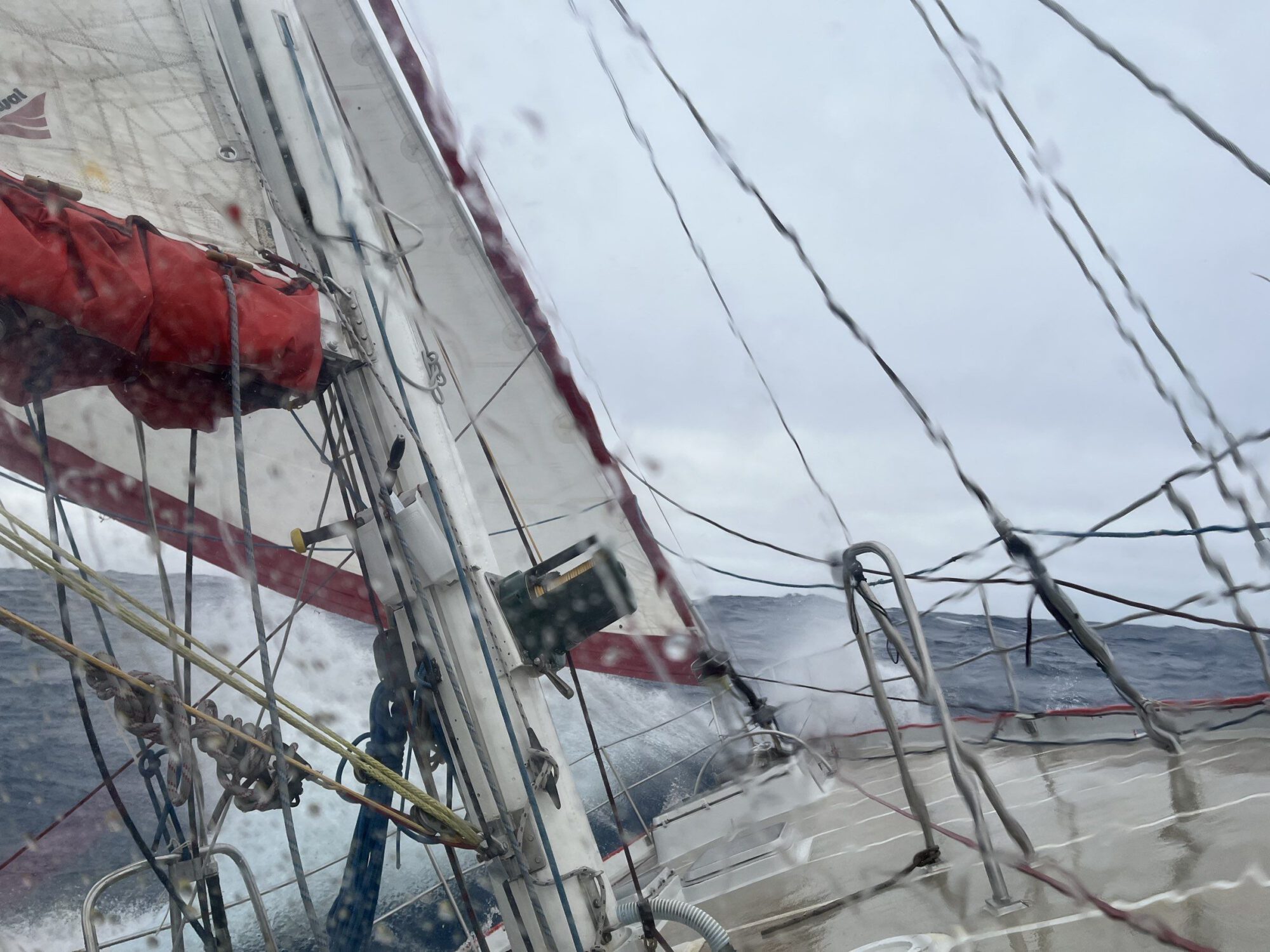We’ve made it!
After four days and nights, the Drake Passage lies behind us, a good 530 nautical miles in our wake. This notorious ocean passage between the Pacific and the Atlantic has welcomed us graciously, presenting a gentle and harmless side with blue skies and sunshine, but at times it has also shown its claws and made us feel for a day and a night that it can get really uncomfortable here.
Standing outside at the helm, thickly clad, heavy, choppy seas and a high swell, almost 40 knots of wind in your face, rain and a constant shower of salt water pelting over you … but at the same time it’s a great feeling to stand alone at the helm, to feel the Selma under full sail (jib, main and mizzen) under your hands, to let her run into the wild waves that keep hiding the horizon, out into the wide ocean, to the south, into the night. Almost as if she knows where we want to go, the Selma finds her own way.
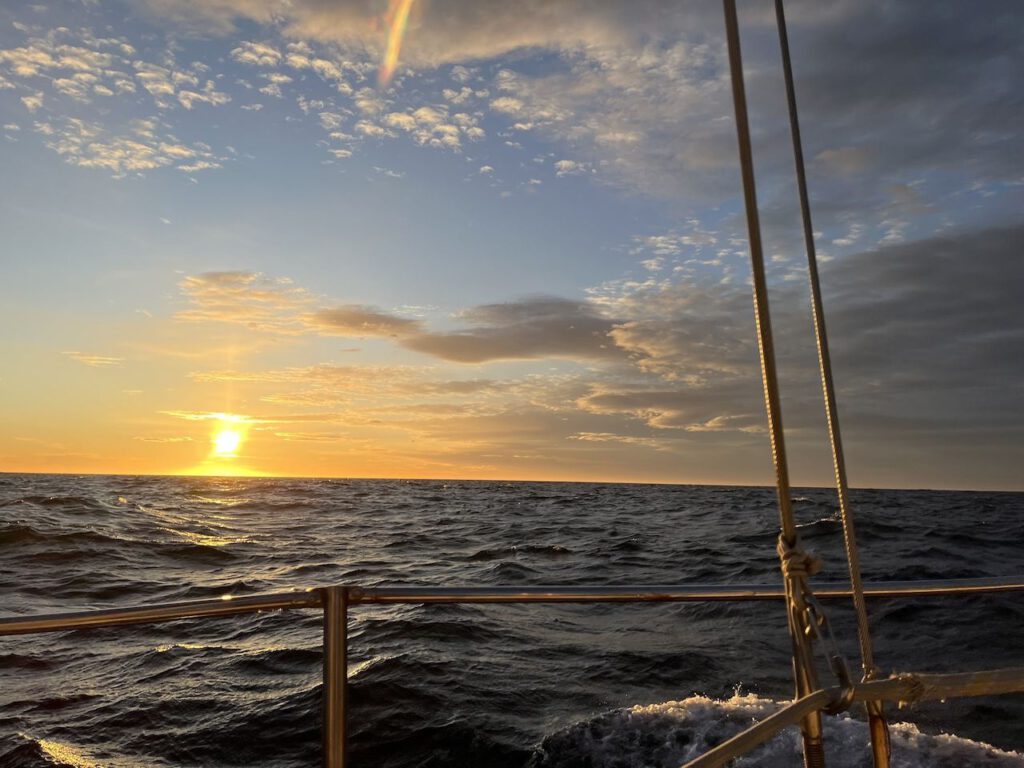
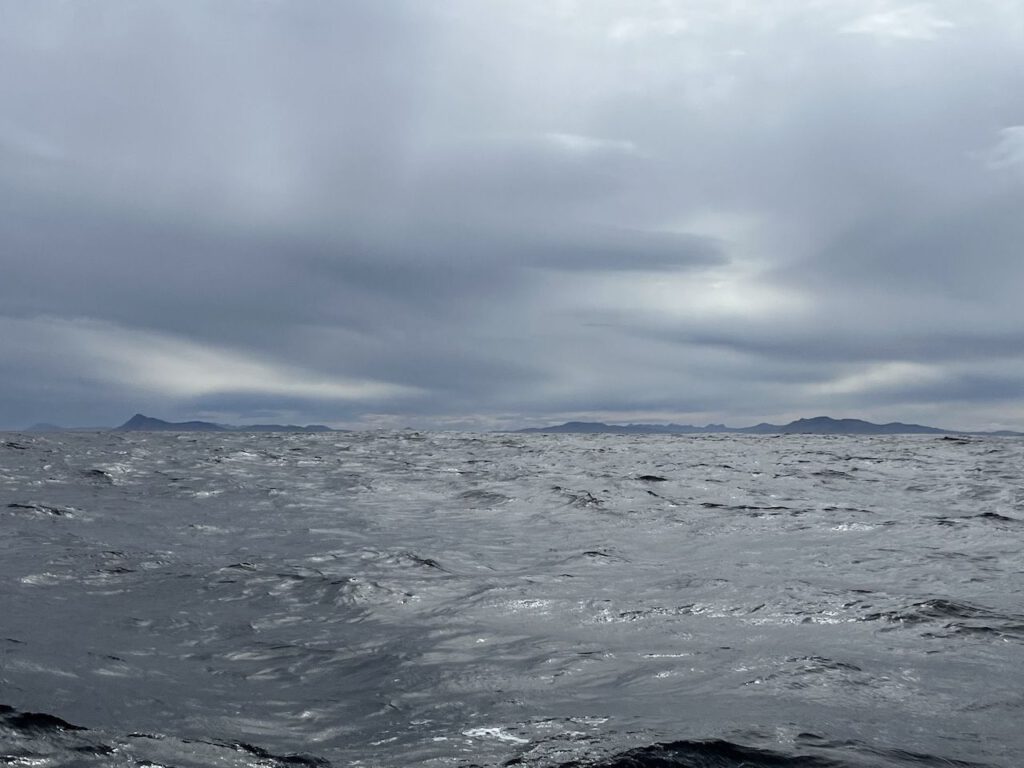
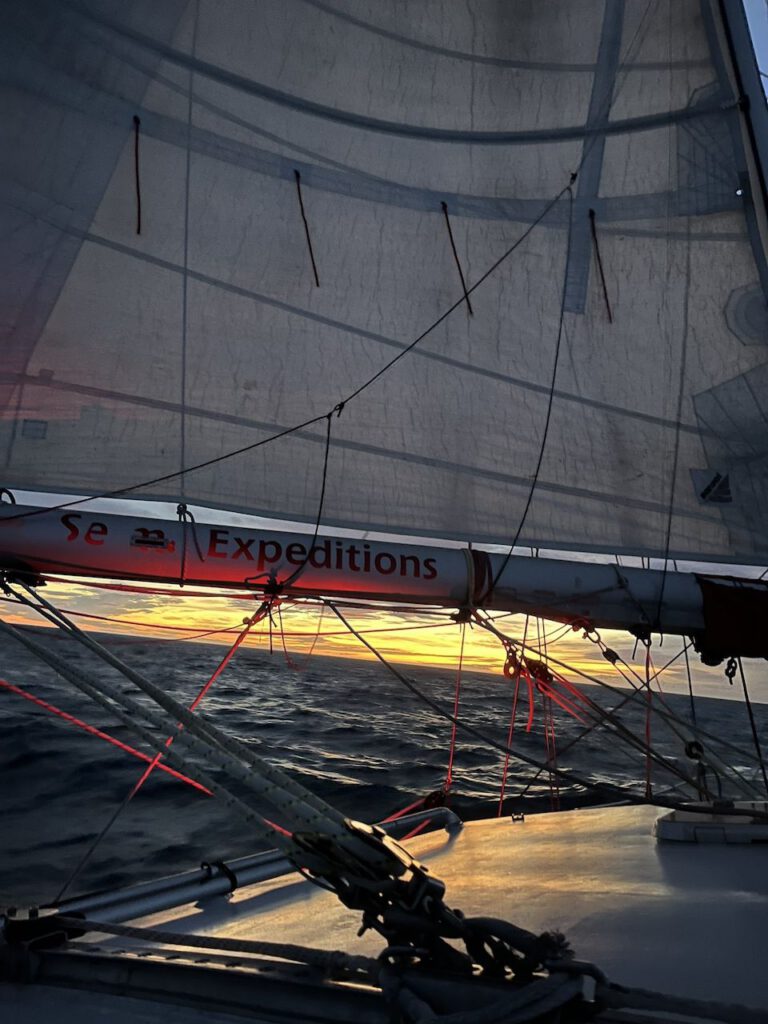
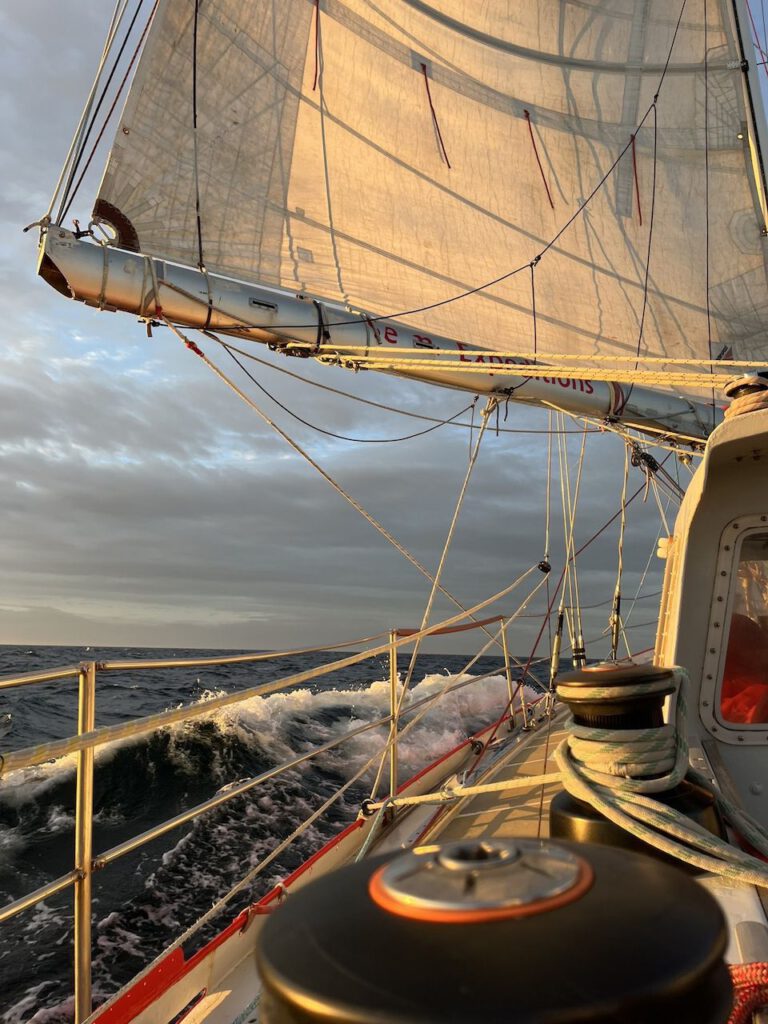
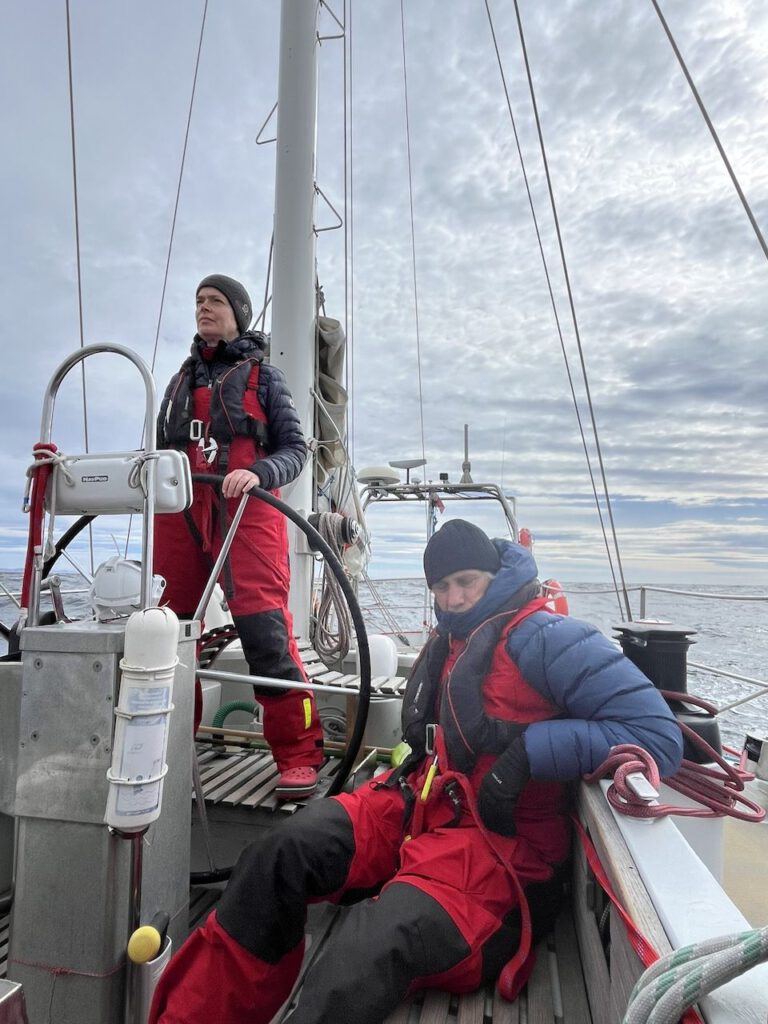
Day 1
We set off in the sunshine, passed the famous Cape Horn just under 16 nautical miles to starboard and then left it behind us in our wake. Albatrosses appeared again and again and circled the ship for a moment. They glided so elegantly and effortlessly over the crests and troughs – a dream of flying and a joy to watch. At some point it started to drizzle out of the initially blue sky and the weather changed, as did the condition of one of the crew, who spent the passage seasick in his bunk. The rest proved to be seaworthy.




Fortunately, the change in the weather also brought a decent wind. We changed course from 180 to 140 degrees and headed for the Shetlands.
Day 2
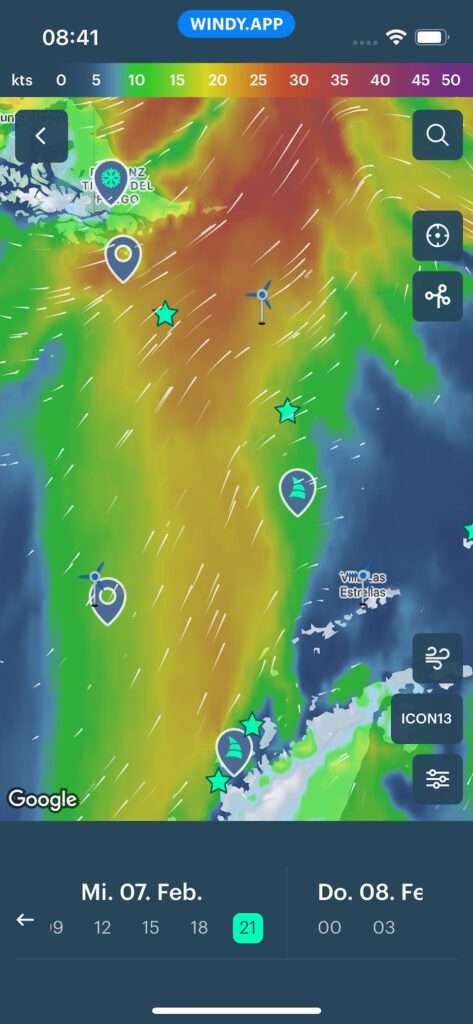
Wednesday was uncomfortable, after four hours on watch everyone was happy to crawl back into the warmth with a hot tea, coffee or warm soup in their hands. However, thanks to the tireless attention of Piotr, our skipper, Wojtek, Ewa and the respective galley team, this is always taken care of.
It remained rough on Thursday night, and although it was warmer and drier in the bunk, it wasn’t necessarily any more comfortable than at the helm. Especially in the foredeck, directly at the mercy of the ship’s movements, we rolled and bounced with the Selma on, in and over the waves, while it rumbled a lot when the bow crashed into a wave or a powerful wave crashed over the deck. Sleep was out of the question. Around midnight, we crossed the Antarctic Convergence and it became noticeably colder both outside and inside the boat.
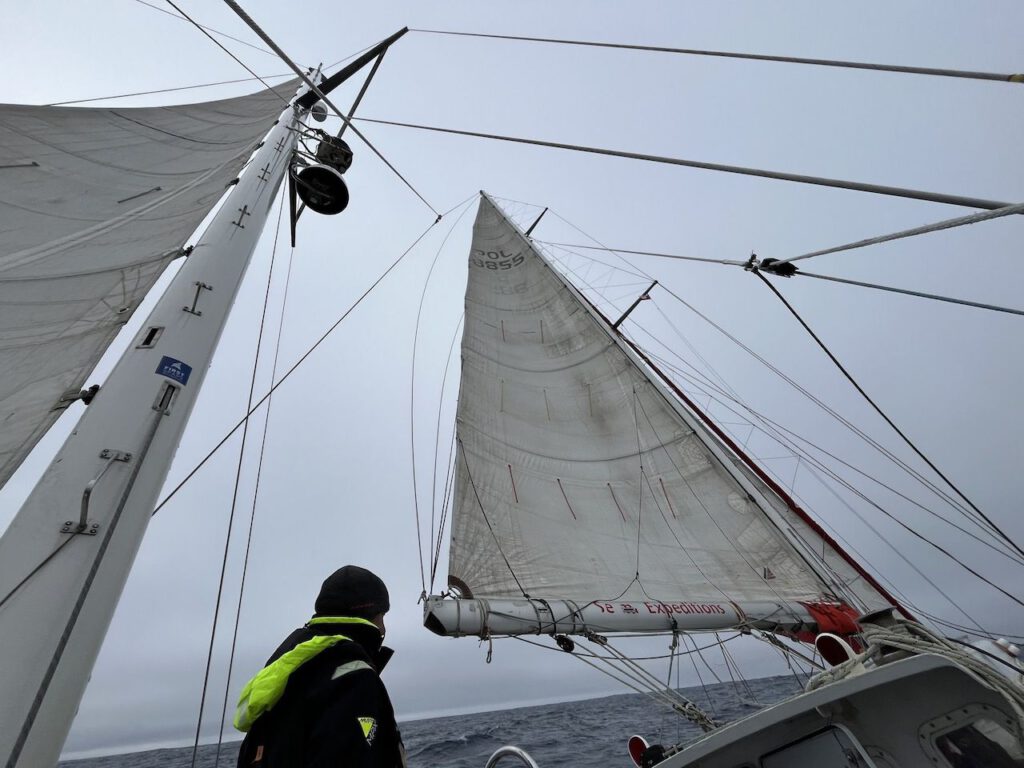
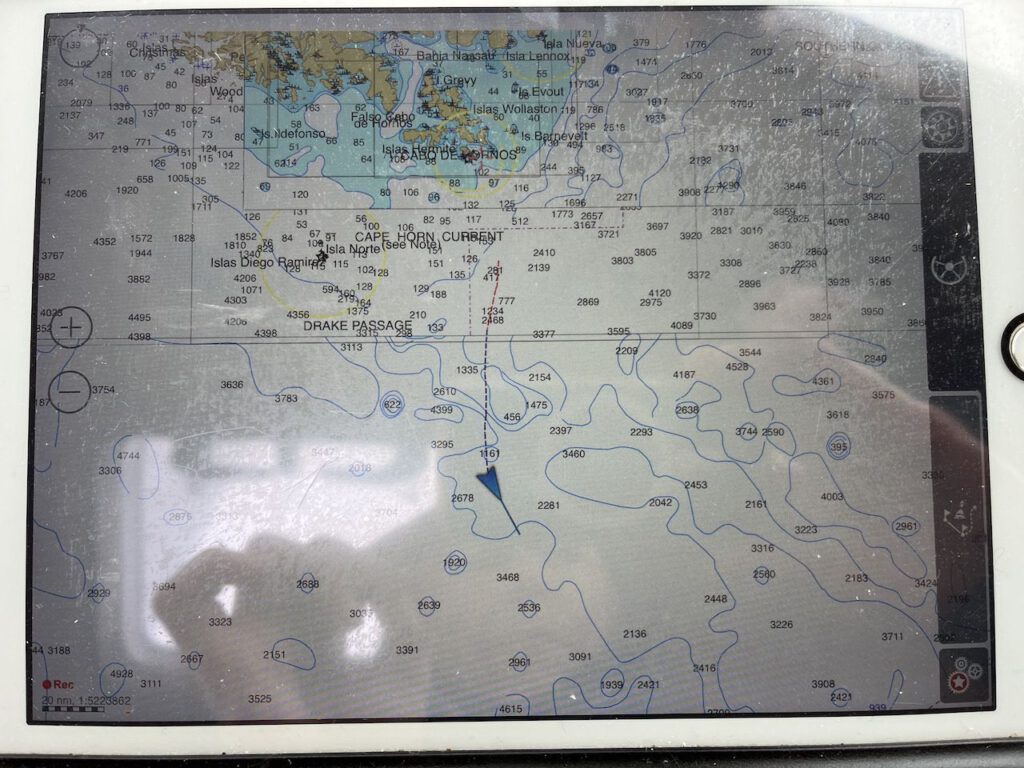
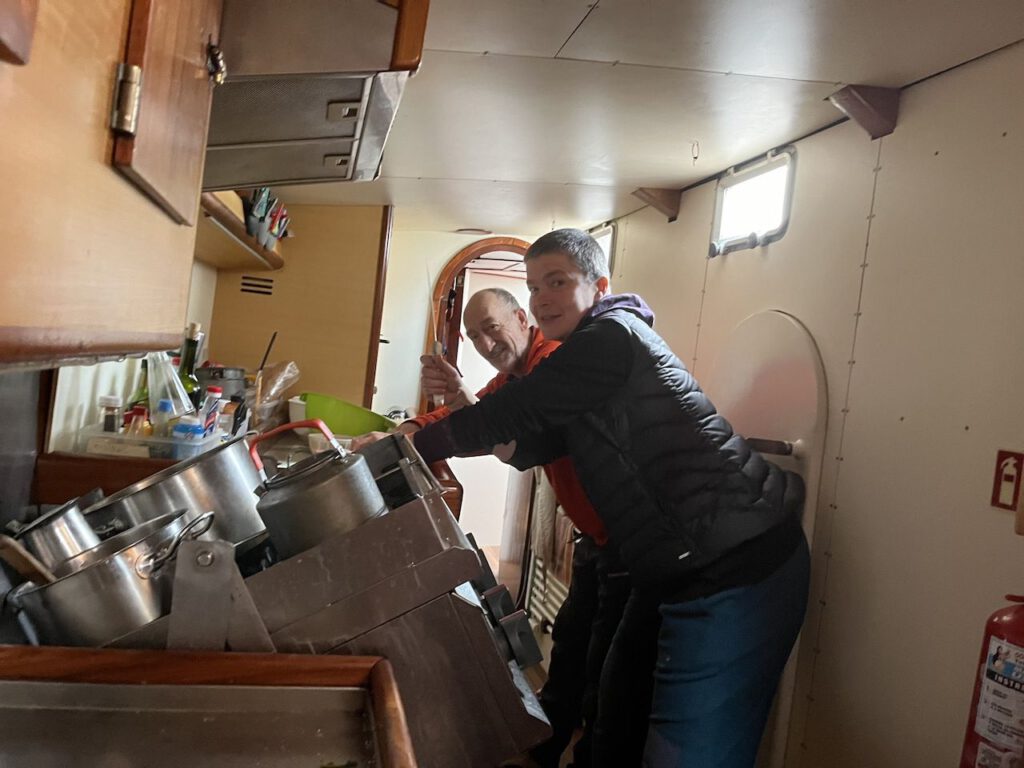
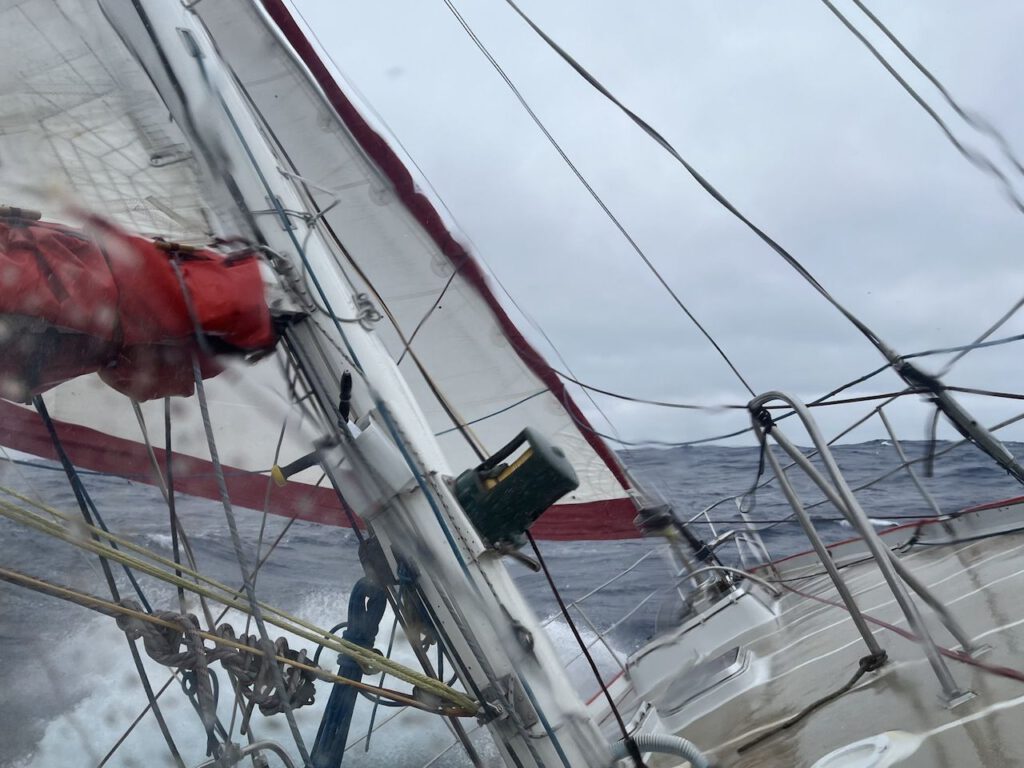
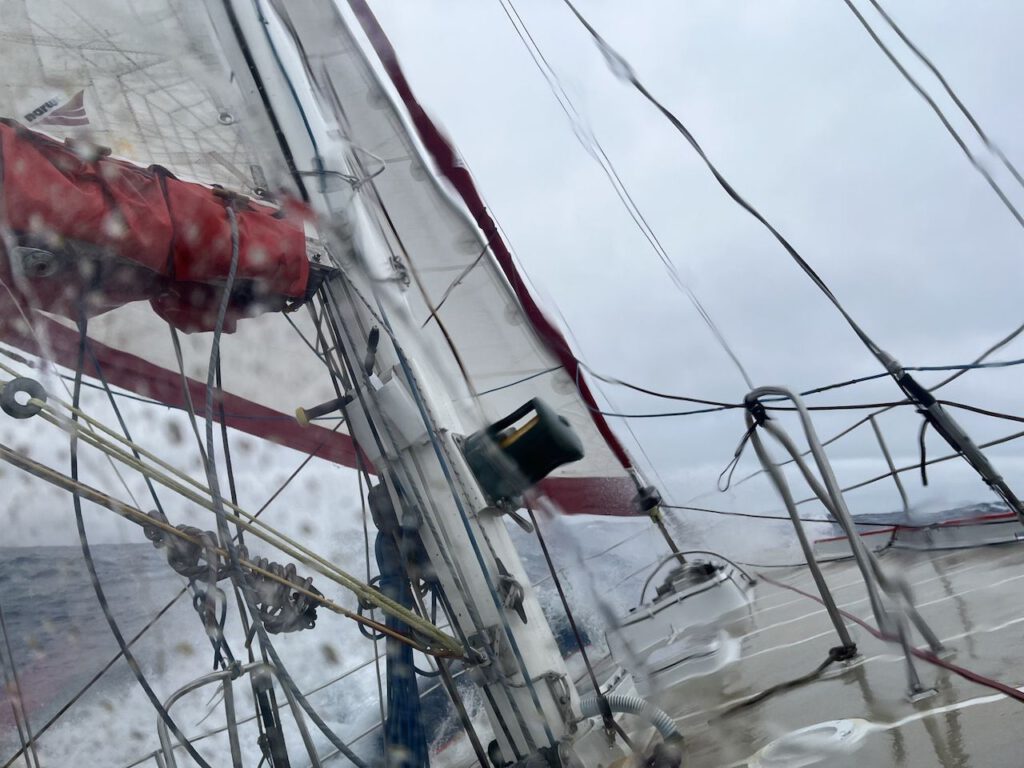
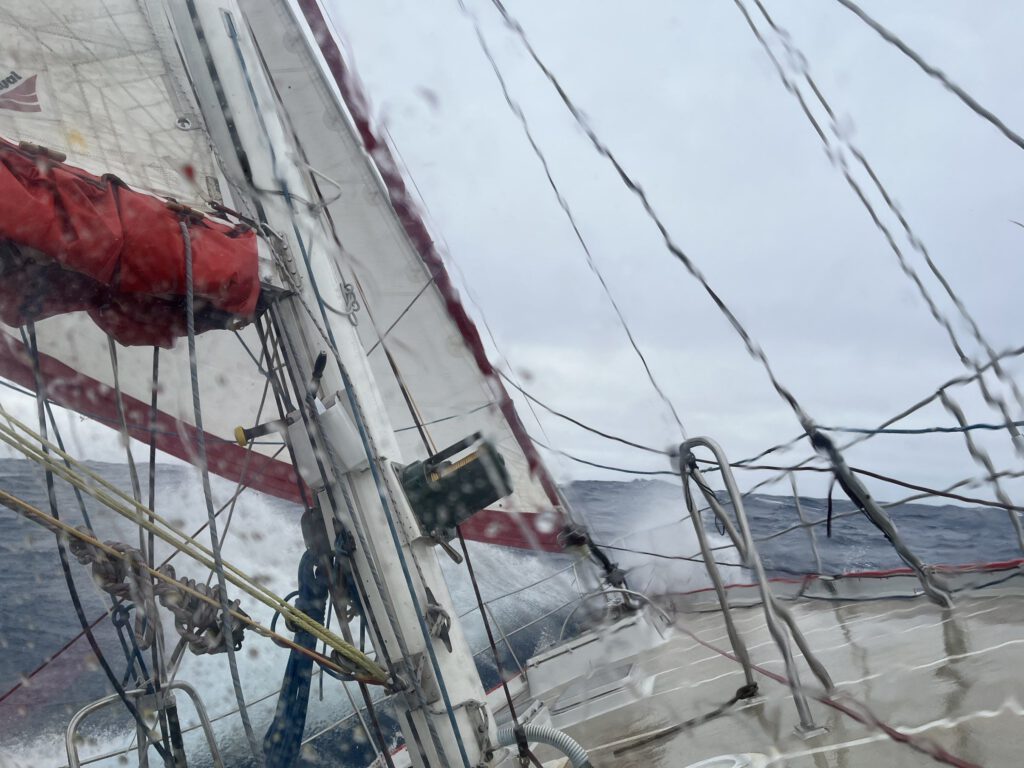
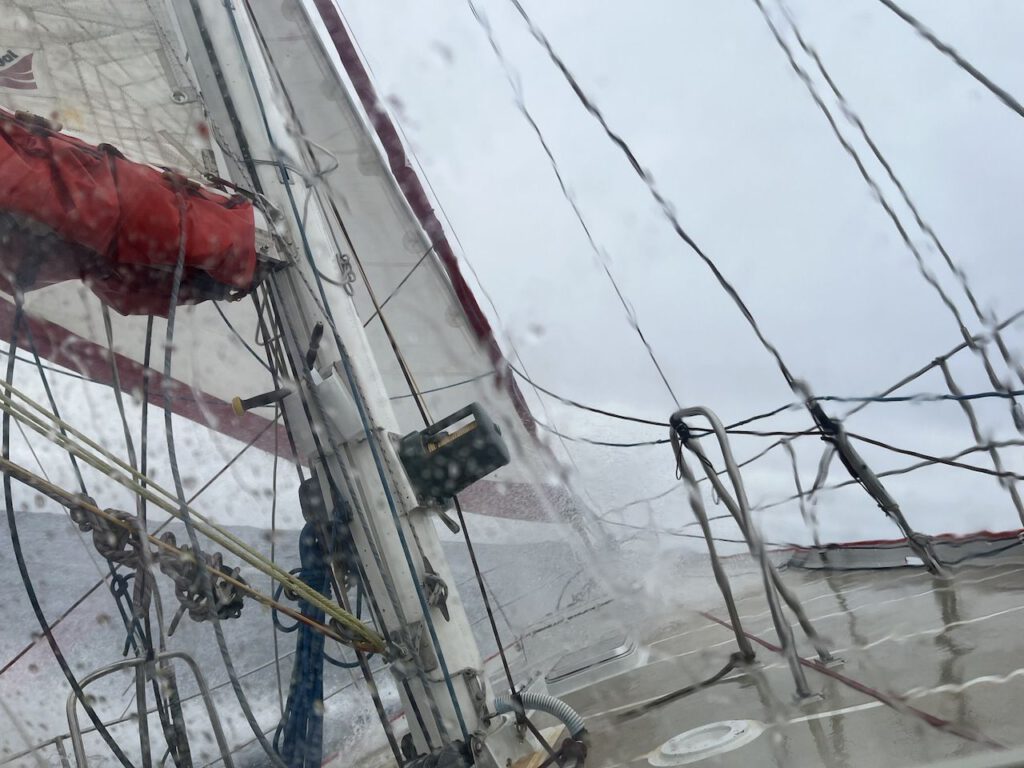
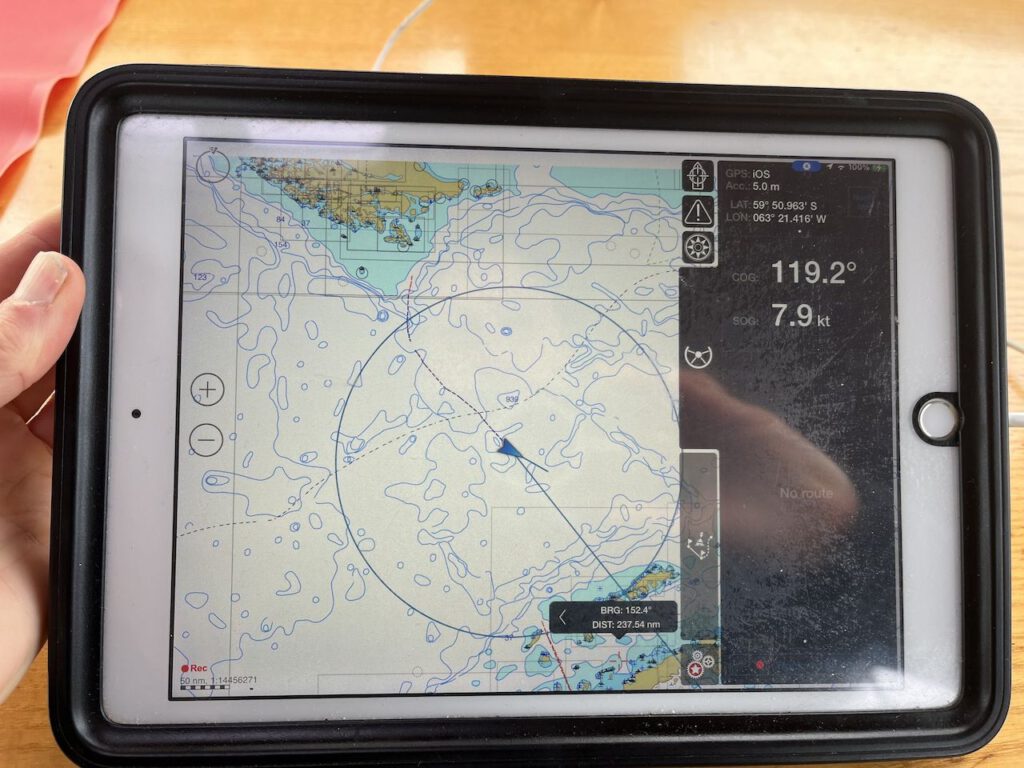
Day3
Thursday brought sunshine and biting cold, but unfortunately the wind also dropped, so that in the afternoon we unfortunately had to use the engine to help with only 12 knots … we really didn’t expect that in the Drake Passage.
As a consolation, we made an attempt at a sheet cake from the porridge left over from breakfast the last two days – we quickly christened it Drake Cake.
In the evening, we spotted the first iceberg on the horizon at 60.44 S 062.33 W. From now on it was time to keep an eye out.
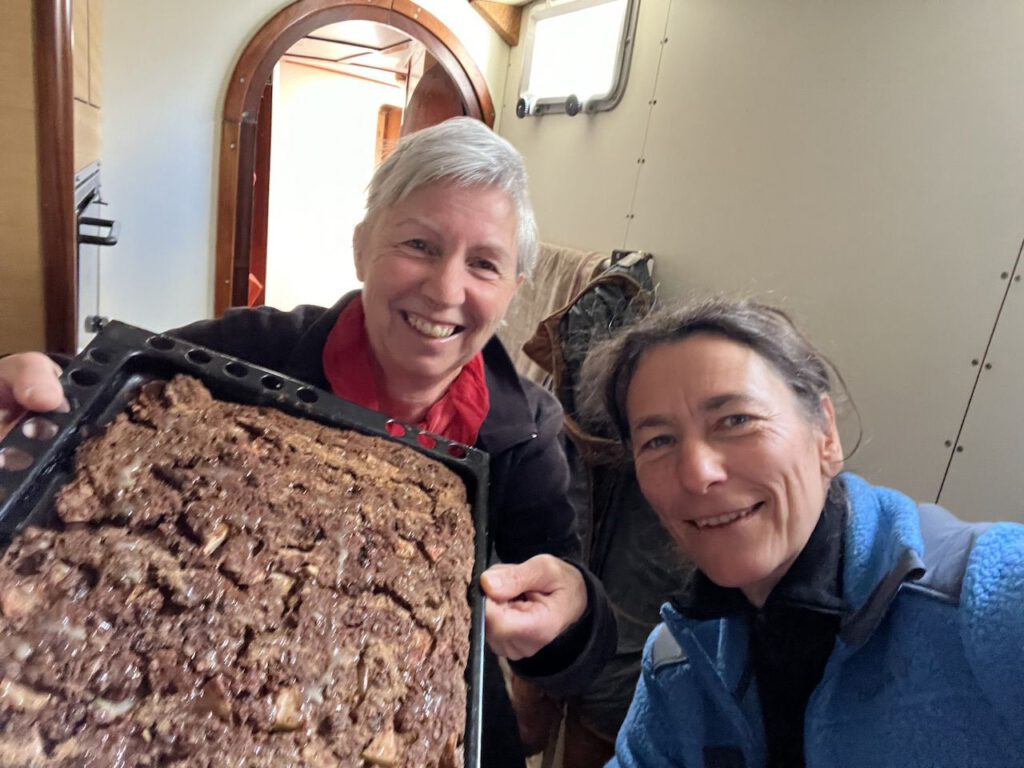
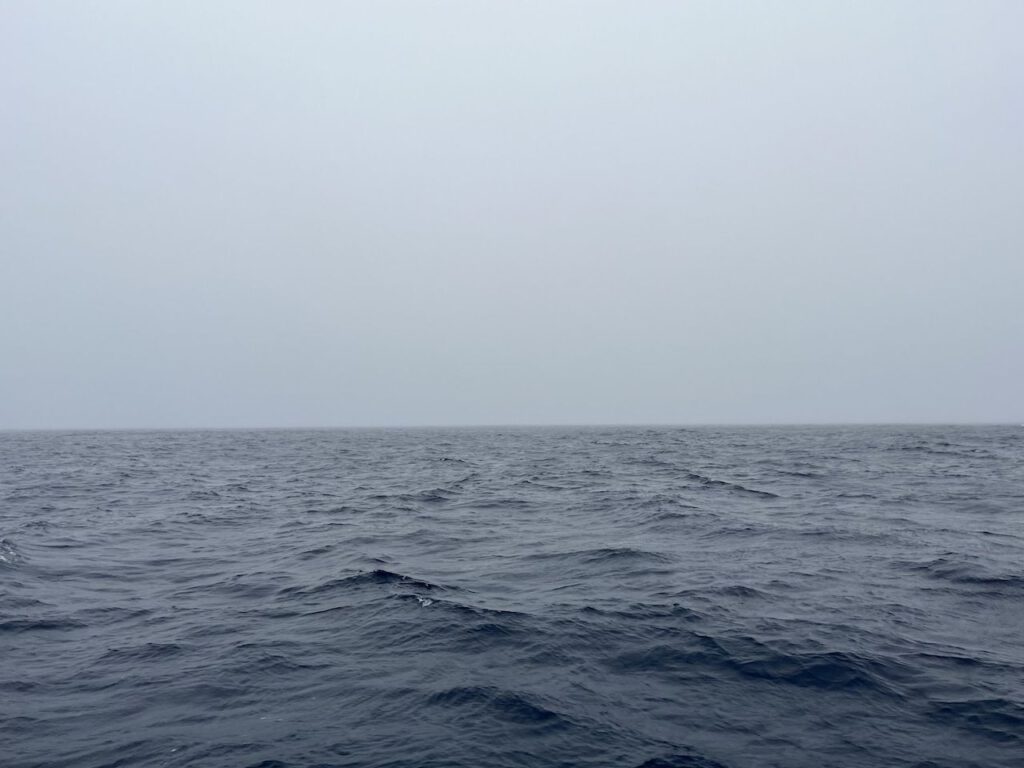
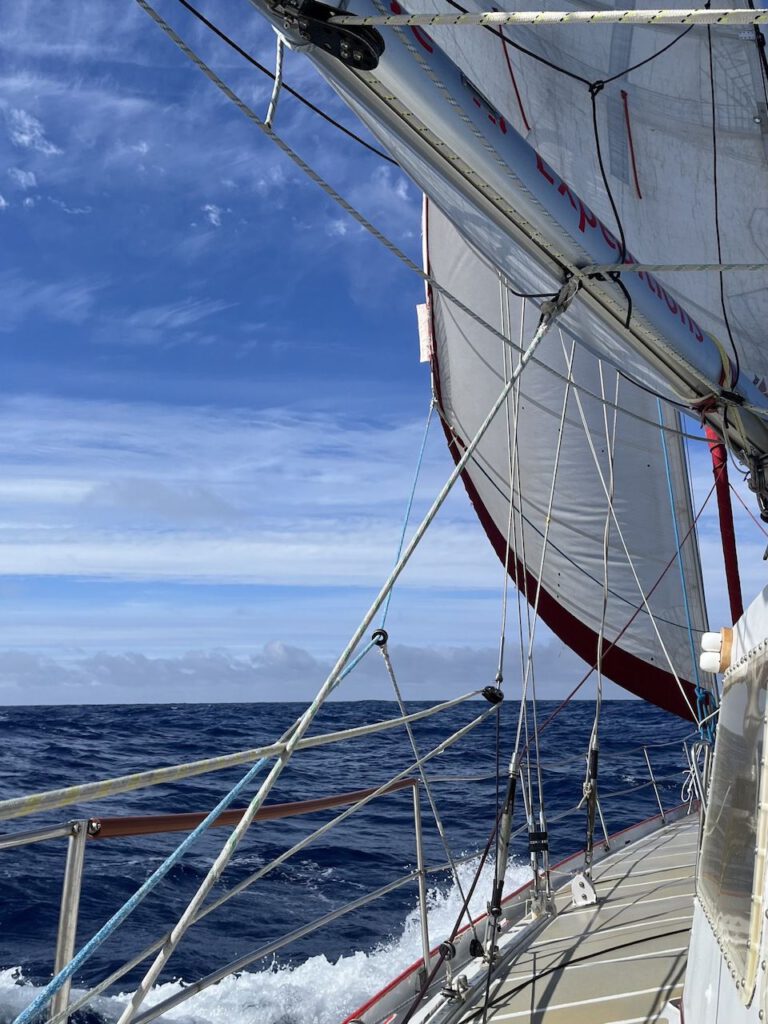
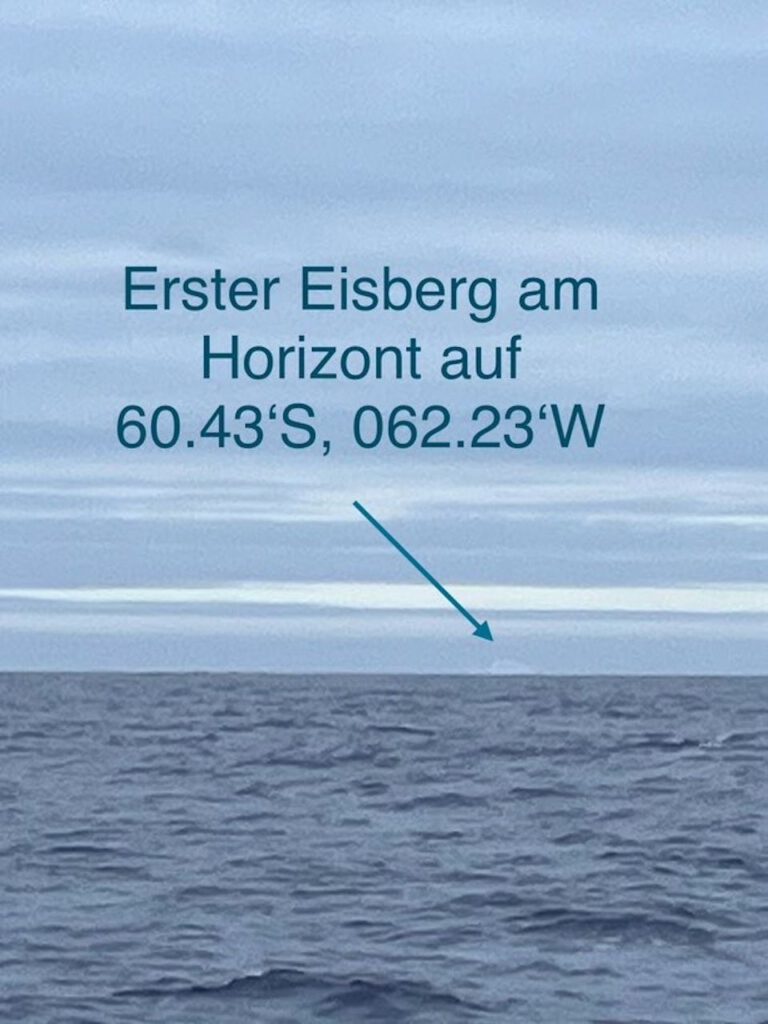
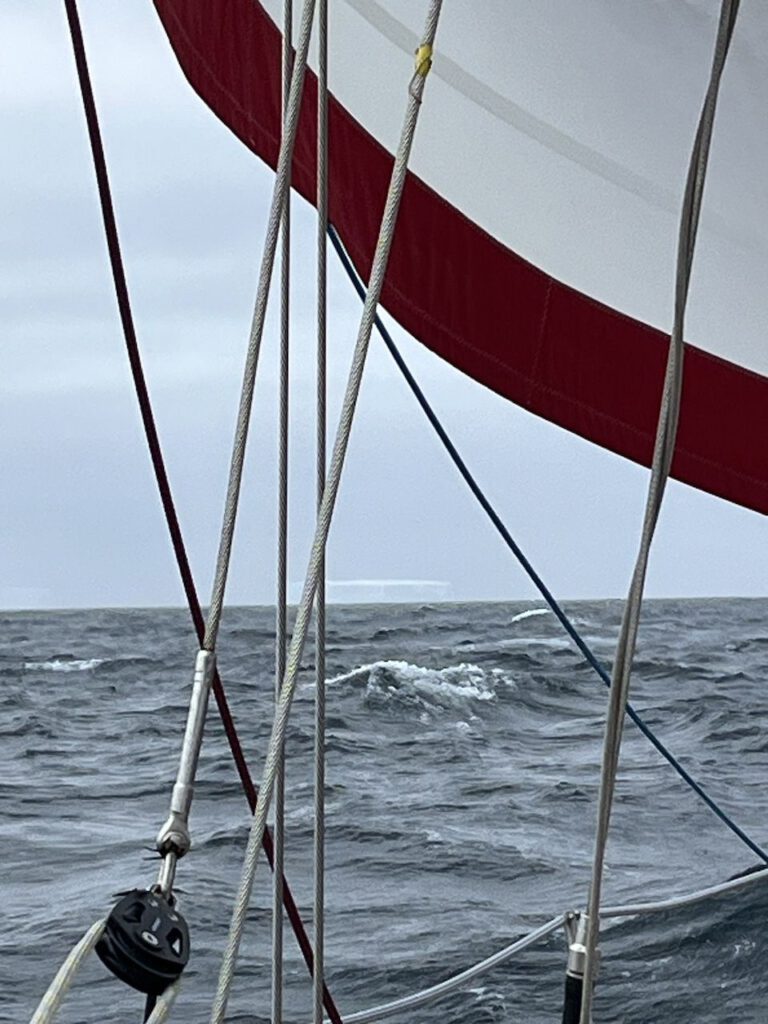
Day 4
The last leg on Friday, sometimes under sail, unfortunately again with the help of the engine after the wind dies down, brings us the first harbingers of the Antarctic: we spot the first whales – the blow just before Selma is followed a little later by the corresponding fin whale right next to the ship, where it then dives. Again and again, penguins jump in and out of the water next to us, followed by a few seals. It gets foggy, more and more icebergs and smaller growlers cross our course. And at some point, the first land mass of Antarctica emerges from the fog like a shadow. First just a small rock called watchkeeper, then Heywood and Table Island, more rocks than islands … and then we sail between Robert and Greenwich Island into the Bransfield Strait.
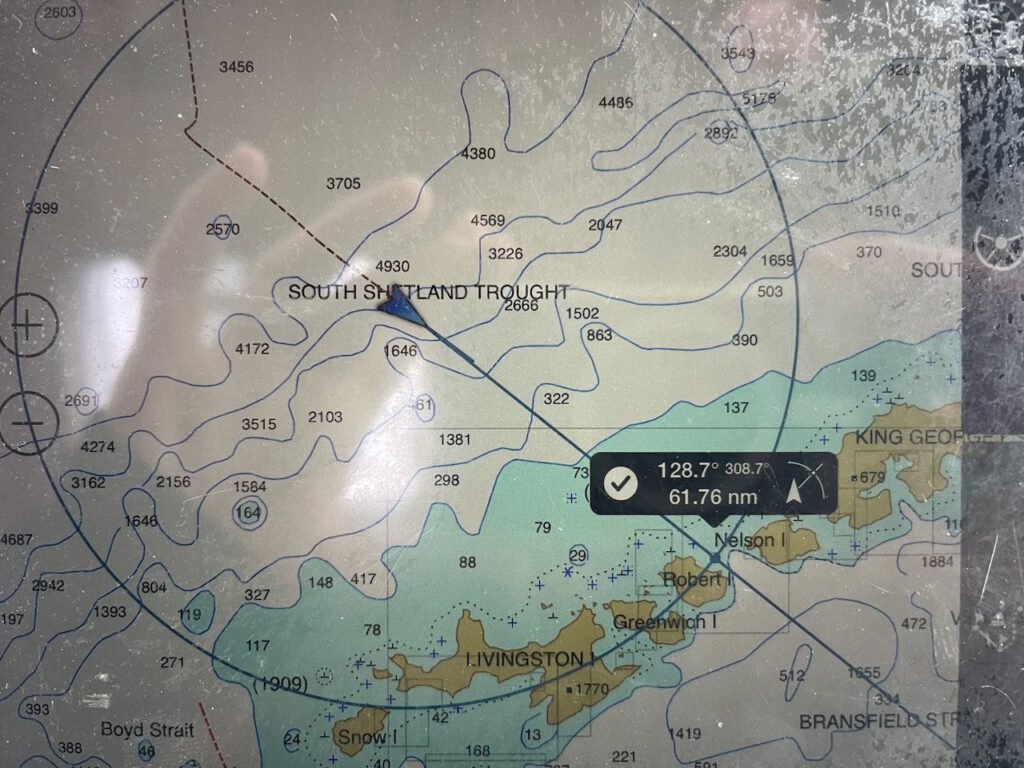
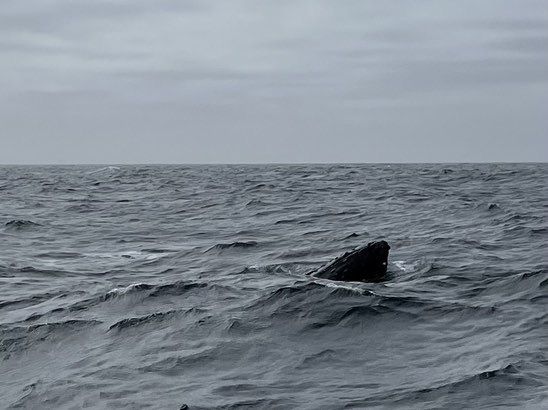
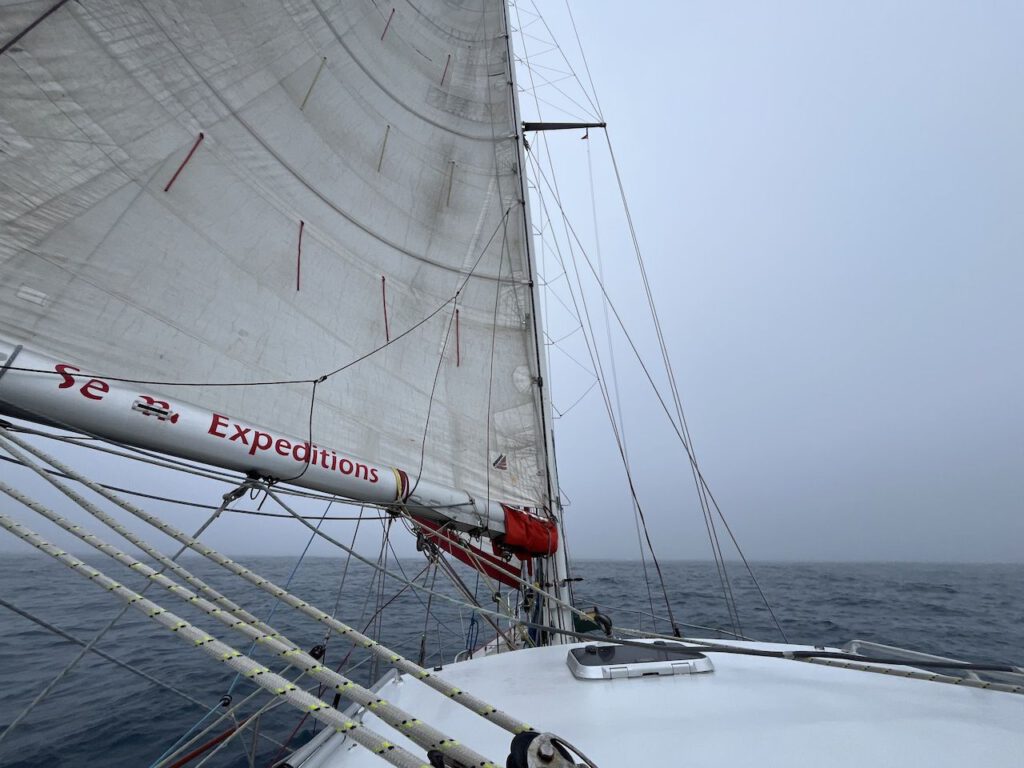
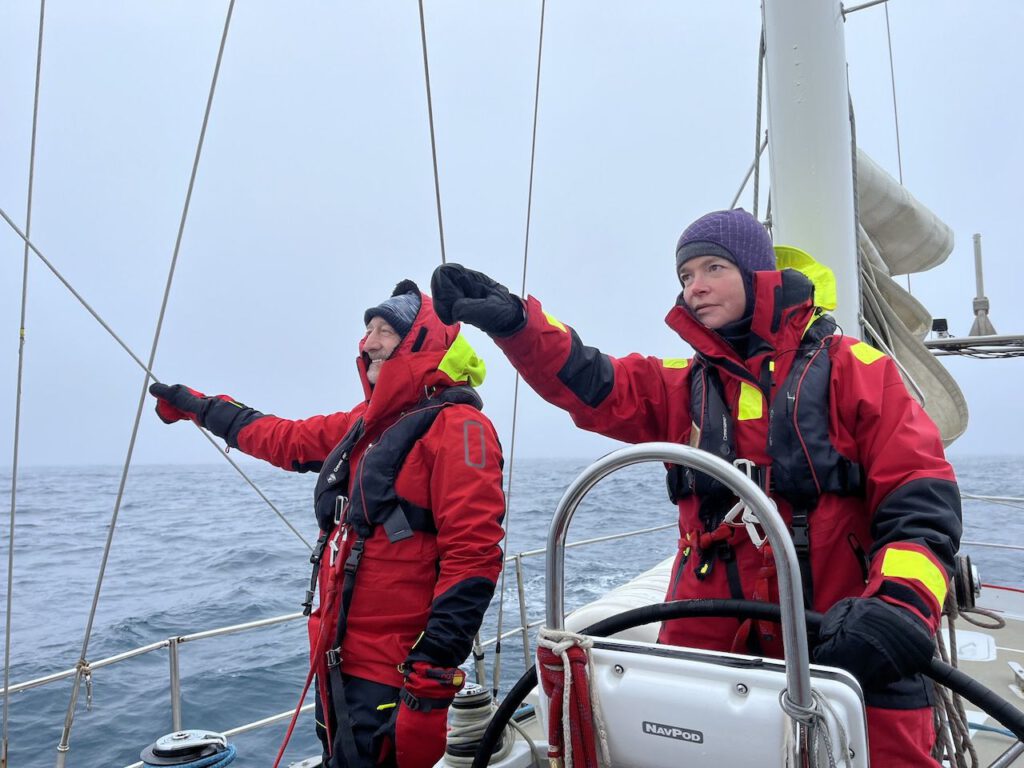

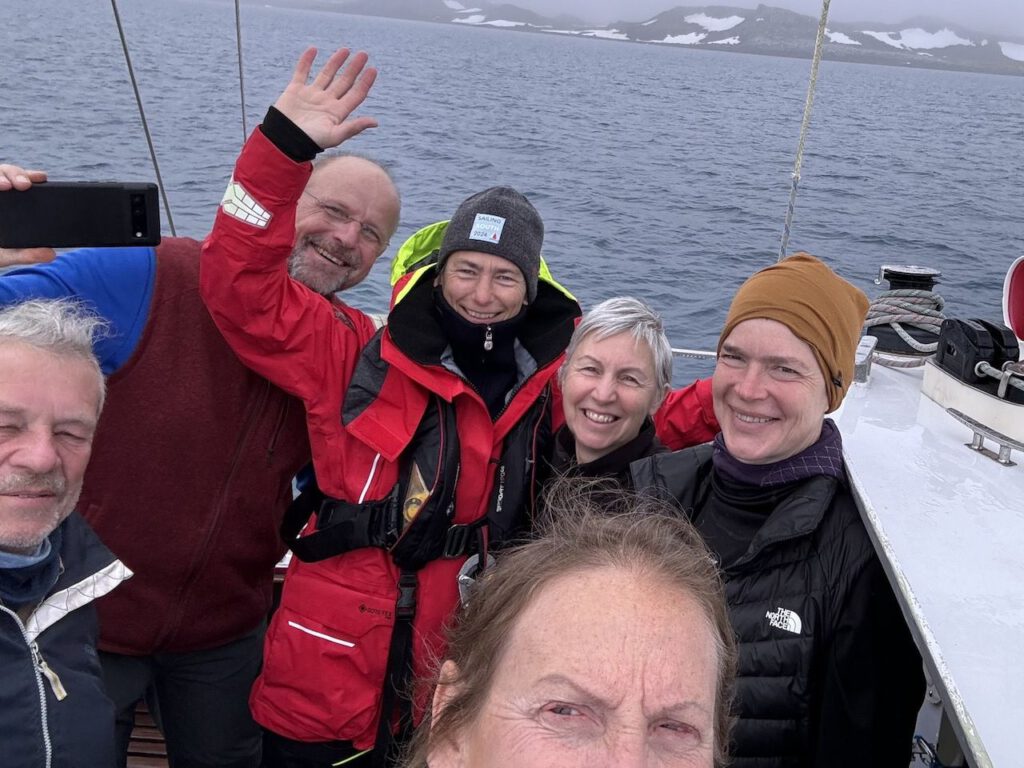
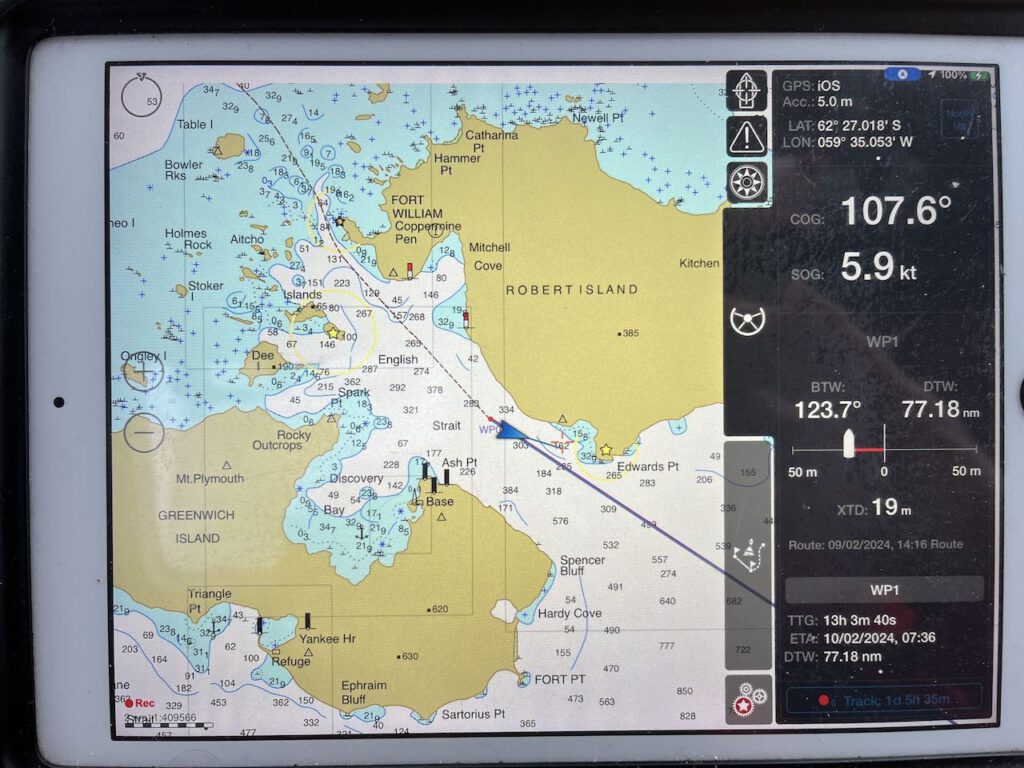
Now we have arrived in Antarctica!
We can’t yet see much more than a narrow strip of coastline, dark rocks, snow and glacier edges in the haze. But this will certainly change in the coming days!
